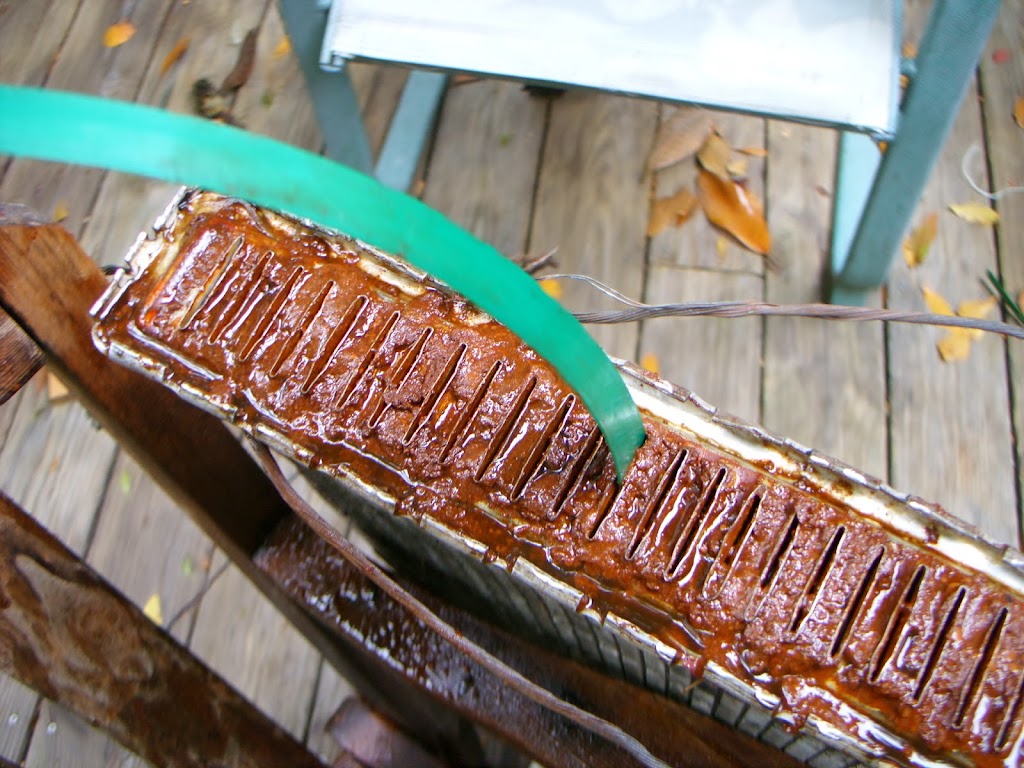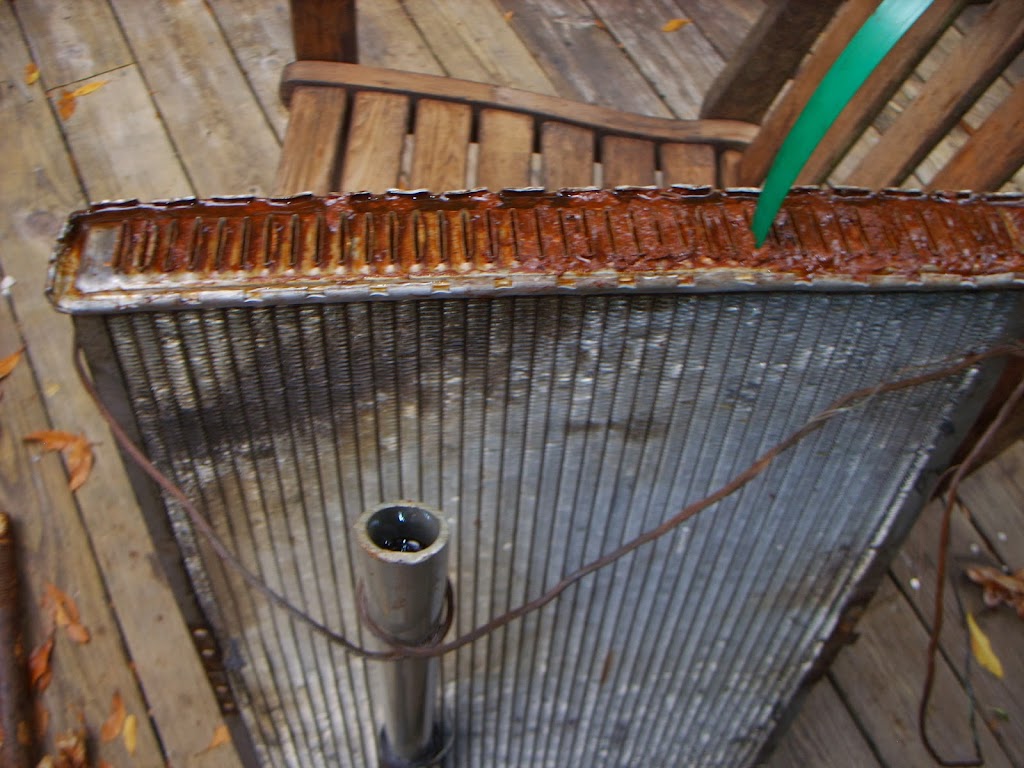Ok, it is horrible stuff, very hard to clean out the radiator.
I ended up pulling the plastic end cap and look!
I do believe it is the bar's leak pellets. They coated the entire inside of the cooling system with a glue like layer. I will say I did not notice the engine blockcoated, but the radiator hoses I scraped out one way or another.
I have no idea how the car did not overheat like this. I ended up pouring gasoline into the radiator and rodded it out and it was very hard.

I had to change the waterpump and its interior was also coated with the brown gooey stuff. It is like rubber cement mixed with rust.
Here it is soaking with E10 gas to aid in dissolving this goop stuff.

I ended up pulling the plastic end cap and look!
I do believe it is the bar's leak pellets. They coated the entire inside of the cooling system with a glue like layer. I will say I did not notice the engine blockcoated, but the radiator hoses I scraped out one way or another.
I have no idea how the car did not overheat like this. I ended up pouring gasoline into the radiator and rodded it out and it was very hard.
I had to change the waterpump and its interior was also coated with the brown gooey stuff. It is like rubber cement mixed with rust.
Here it is soaking with E10 gas to aid in dissolving this goop stuff.
Last edited:
